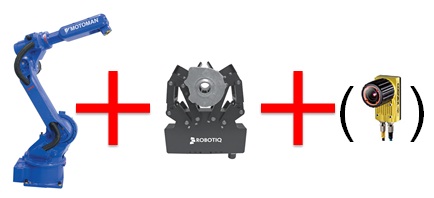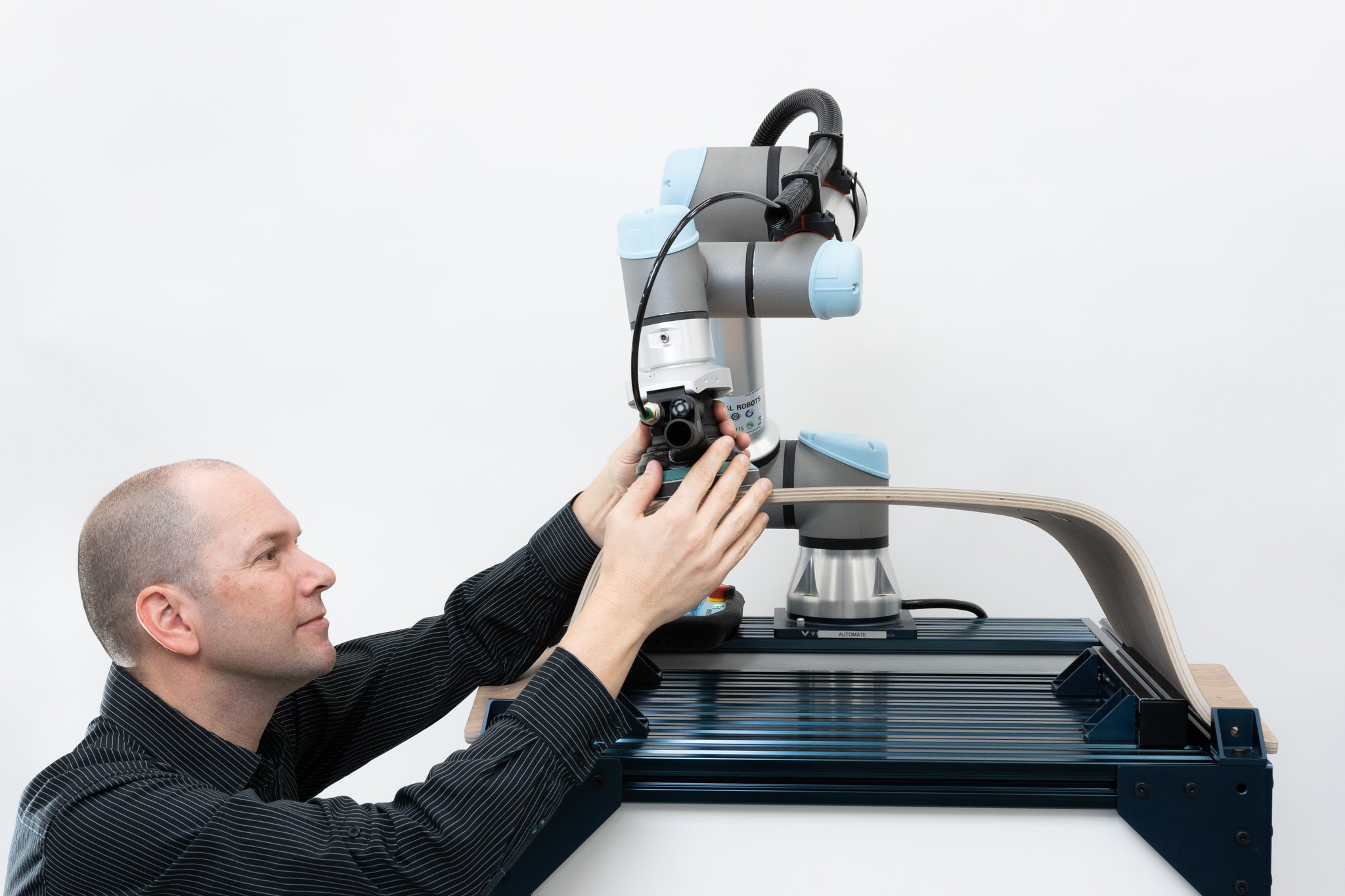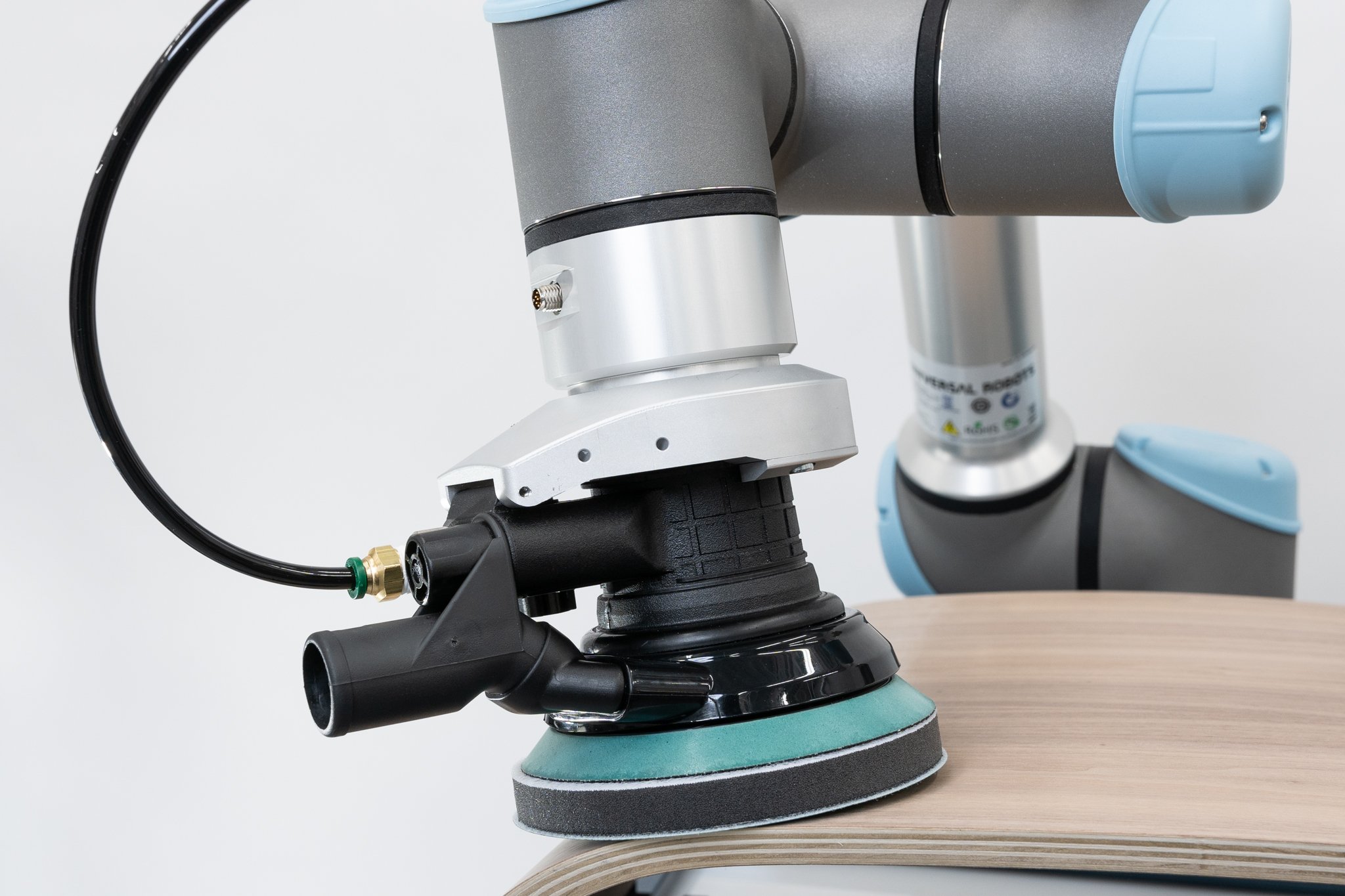Useful Robot Dexterity for the Factory

Posted on Jan 23, 2013 4:52 PM. 11 min read time

MANUFACTURERS NEED ROBOT DEXTERITY
Why manufacturing companies need robot dexterity? Manufacturers want and need to automate for all the usual good reasons. Typically:
- They have difficulty in finding skilled labor.
- They need to reduce costs, improve quality.
Many companies out there need to take tasks that are currently done by humans and find a way to do it with robots. Technically, this can usually be done. Take the parts in slide 4 for instance. Can you find a way to pick all of them? With some engineering work and a budget, sure you can. Then you need to prove your return on investment (ROI) to justify the equipment purchase and programming costs.
So, when you compare the current situation of manual labor to using a robot. The cost of the robot is pretty reasonable considering how robust and capable they are. Plus, the robot is the central piece that can be used on all the parts being manufactured. Also, the robot cost can be amortized over the whole production range.
And don't forget the cost of customization for the different parts handled and products manufactured. Often, the current approach is to use custom made tooling for each different product that you handle. This in turn requires lots of integration and programming adjustments. And all these new costs can only be amortized on a small number of parts and products. For each new part, you need more tools, more programming, then in turn more floor space, racking space and more changeover time.
Without dexterity, the cost of automating grows exponentially, along with the flexibility that you need. This is why manufacturers need dexterity.
This is one reason why so many people can’t obtain a decent return on investment for their automation project and why they need to continue to do it manually. The goal of dexterous manipulation is to offer flexibility at a fixed cost. Just like the robot, have one tool set that can handle everything, so the ROI can be realized and the customer can automate.
ROBOT HANDS TODAY
The current approach to robot manipulation is the following:
- Robots and grippers are basically movement generators with limited or no sensing capabilities.
- Vision has increasingly been used in recent years and it has improved many applications. But not all applications. Force sensing is still very rarely seen in industry. And I’ve never seen tactile sensing in the hundreds of factories that I’ve visited.
- Because you have little sensing, you need to rely on the mechanical repeatability of the system. This is a challenge when making flexible hands because mechanical flexibility and mechanical repeatability do not go well together.
- And to cope with the limitations of current robots and grippers, you end up changing the process: features on the parts, how the parts are fed, etc.
Also, as engineers, we break the system into digestible chunks. The issue here is that all parts of the system are interrelated. There are an infinite number of ways to do a handling task. For instance, a more capable gripper can simplify the vision requirement and vice versa.
Finally, in the integration world, there is a tendency to leave the gripper choice to the very end of the project, after all the other parts have been decided and approved by the stakeholders.
In this system, what is the purpose of a robotic hand?
The first part of the answer is obviously to pick things. So grippers are first compared according to the specifications that come into play in picking, highlighted in green in slide 10: stroke, grip force, speed, dimensions for the casing and finger(s), etc.
But picking the part is only one portion of the hand’s purpose. It also has to be able to hold the part while the robot is moving and do something useful with the part in collaboration with the rest of the system: place it, insert it, push on it, hold while it is being finished. What I call here ‘the process’. Note that this table holds true for the current system approach discussed previously.
So what is the best robotic hand?
The answer will depend on what the hand needs to do and on which system it needs to be integrated. Let’s say you could have a robot hand with the same properties as a human hand? Would it be the best hand to install on the current industrial robots? I don’t think so. The human hand is super flexible, it can do a myriad of things. But it is not the fastest, strongest, most repeatable hand, which is what is needed with the current way of doing things.
In the graph at slide 11, I show the position of different grippers and hands. The vertical axis is the performance if used on a traditional robot. Performance meaning strength, speed, accuracy, repeatability, etc. The horizontal axis is the number of different tasks that the hand can do.
On current industrial robots, there is a reason why simple pneumatic grippers are still the most widely used devices. They are strong, fast, repeatable, compact, reliable and cost effective. And the majority of robotic applications installed so far deal with a limited number of different parts.
What this workshop is about is how we can push the boundaries to the right, have one robot systems do more different tasks. One thing that we need to realize is that more flexibility usually means less raw performance in terms of grip force, speed and repeatability. As flexibility increases, going all the way to the Shadow Hand, raw performance decreases.
And I put there the hobby grippers because there is a 3rd axis that should be used to compare grippers, which is cost.
Things are slowly changing as new industrial robots are entering the field, such as Rethink’s Baxter or Universal Robots. This graph here could be drawn for manipulators instead of hands and it would look pretty similar. The traditional industrial robots would be at the top left and the new industrial robots would be at the center: less raw performance, more flexibility. So as robots targeting flexibility enter the market, they will also give more room to flexible grippers and hands.
MAKING GOOD ROBOT HANDS
How to find the sweet spot in terms of flexibility, performance and cost? In other words, how to make good hands to enable dexterous manipulation in the factory?
Image at slide 14 is a representation of the human body with part sizes distorted. The bigger a body part is in the model, the more brainpower there is dedicated to controlling it. A similar model exists for the brainpower needed to treat the sensory information from different body parts, and the hands also represent highly significant parts in this model. As you can see, sensing and controlling hands is not an easy task even for the human brain. The mechanics, sensing and processing involved in the human hand are astounding. So making good dexterous hands is a very interesting design problem.
As we’ve previously seen in the table with the different functions of a hand, sensing could help at all steps: picking, moving and especially doing something useful with the part.
There are two parts of the sensing problem:
- The first is to get the data reliably, consistently, and in a robust and cost effective way. Considering that grippers pick thousands to millions of parts in a tough manufacturing environment, this poses a serious design challenge for tactile sensors that are the first line of contact.
- Then, you need to do something with the data. Algorithms need to be developed to understand the information. You detect slippage for instance. Is it slippage of the part against the fingers or it is slippage of the part against the whole wall it’s being inserted into? After you understand what is happening, the software also needs to tell the robot and the hand what to do. Finally you need to be able to program the robot to do things using these functions or have a robot that is intelligent enough to do it on its own.
If we can make it work, tactile and force sensing can open a world of applications, just like vision has done over the past few years. Also, using sensing, the appropriate force and mechanical repeatability can be easier on the components. This, in turn, can potentially lower the cost of the mechanics.
If you want to increase dexterity, most probably you’ll have more complex and fragile hands. Unfortunately the hand is always between the hard / rigid environment and the strong, rigid robot. You can see on slide 16 a picture one of our Adaptive Grippers installed on a 100 kg payload Kuka robot (integration done by our partners Automatech). The system does semi-random bin picking in a foundry. Needless to say that the gripper was hit several times during the programming and debugging of the system.
There are several organizations looking at having compliant hands. iRobot and Harvard did a compliant hand in the recent DARPA ARM program. The DLR also came up with a hand whose compliance can be controlled so it can take severe impacts. The problem with compliance is that it is totally contrary to the mechanical repeatability that is needed in the current way of doing things. So again, sensing will be critical to help preserving robot hands: Sensing will be able to detect some forces and protect the hand. Also, it will be used to compensate for hand compliance.
Naturally, cost of flexible grippers must go down. As the industry transitions to more flexibility, new ways of doing things are compared to the current way of doing things. Any flexible gripper is currently compared to what people know, which is pneumatic grippers. Flexible grippers being more expensive than the pneumatic ones, sometimes the comparison ends there. But what flexibility brings is savings later, during the integration and during operations, when changeovers can be eliminated.
Still, to allow for wider acceptance of flexible grippers, their price must come down. They have to be easy to integrate. Complex control and sensing algorithms must be well packaged, simple for the person that is putting the parts together.
You can put a number beside stroke, grip force, speed and price tag, but not on dexterity. In the end, dexterity has to be translated into a dollar amount.
BENCHMARKING ROBOT DEXTERITY
So just like for the gripper, the meaningful unit to measure dexterity is the cost savings that it can provide. What would be very useful is to define what is dexterity in the context of manufacturing. What is the target that the robot and component providers should aim for?
DARPA does this for the military, coming up with challenges that represent current problems that robotics should solve. NIST has started a project to benchmark dexterous industrial manipulators and hands. We were recently discussing with university partners and they pointed out a standardized test used in prosthetics and I thought it was a useful example to present here.
The test is the SHAP, developed by researchers at the Southampton University in the UK. It consists of 26 tasks, some more abstract, some representing activities of daily living. They have people doing tests to pick different parts and do something with them. The success is noted as well as the time taken to complete a task. These numbers are compiled to give a score to the user.
What’s good about this test is:
- They can discriminate between functional and force limitations. For instance, they have 2 spheres to pick, a light and a heavy one. Someone might be able to surround a sphere but not be able to lift the heavy one.
- Also, it measures not only abstract parts but really the function of the hand and arm: can they do the tasks they are meant for.
So I was thinking: could such a test be useful for dexterous robotic manipulators in manufacturing? For manufacturing systems, could we think of a set of tasks that would be a good representation of overall industry needs?
One major difference between a test for humans and a test for robots is how the intelligence is taken into account. Saying to a human "pick and lift the heavy sphere" will be understood by everyone the same way. Instructing the same thing to a robot can be done many ways, and the process of instructing the robot, whether it’s programming or teaching, might also be one interesting aspect to measure in a test.
Also, tests for humans will also be for human scale. Should we focus on a specific scale for robotic systems, this is not clear.
What is clear to me is that dexterity should be for the system as a whole. And the question to be asked is "How well can the system do the job?".
In conclusion, there is a gap between the demand for the dexterity and the offer. People need more flexibility, there is no doubt about that. But the current offering is only about half way there. Finally I would like to thank NIST for organizing this workshop, bringing everybody together today is one step toward closing this gap.









Leave a comment